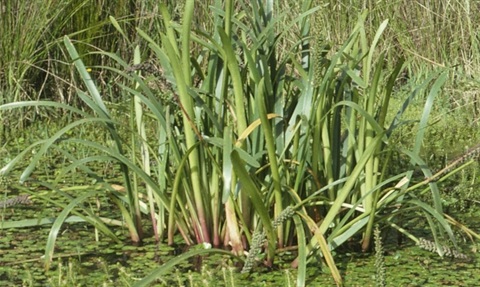
Cycnogeton procerum
Water-ribbons, Nareli, Pol-an-go
Robust tufted perennial herb with thick woody roots ending in cylindric tubers. Leaves and stems erect, leaves bending down to float with the current, more erect in still water.
Additional information
- SynonymTriglochin procera
- FamilyJuncaginaceae
- StoreyLower storey
- Sizestems 20-50 cm high
- Plant groupingAquatic & Semi aquatic
- LeavesLong glossy ribbon-like erect to floating leaves to 3.5 m x 40 mm, thick and spongy at base.
- Flower colourGreenish
- Flowering timeAugust to April
- FlowersDense terminal spike 6-50 cm x 17-40 mm with 50-320 small flowers. Fruits round to elliptical, longer than broad, segments attached over most of their length, straight to spiralling around each other.
- Bird attractingNo
- Butterfly attractingNo
- Frog habitatYes
- Growing conditionsAquatic in slow-flowing water to 2 m deep and permanent swamps and streams or in areas which may dry out briefly, when plants are smaller. Full sun, semi-shade.
- Garden useAttractive plant for flowing water, leaves moving with the current. Also suitable for small pools.
- Commercially availableAustralian plant & indigenous nurseries
- Conservation statusWidespread within the Shire
- Aboriginal Use Food - tubers (roasted or raw)
- Related speciesCycnogeton species differ from Triglochin in that they are all perennial (although T. striata is also perennial) and have woody rhizomes and tuberous roots. They also lack ligules (an appendage at the top of basal leaf-sheaths). Cycnogeton rheophilum has been collected from Watts River, Healesville and Yellingbo. It is similar to C. procerum but its leaves are usually submerged and it occurs in fast-flowing water in tall open forests. Leaves range from 0.4-4.5 m.
Photo Gallery
Photographer/s: 1 Peter Kinchington ©; 2-4 Marilyn Bull ©; 5 Colleen Miller ©
Plant Communities